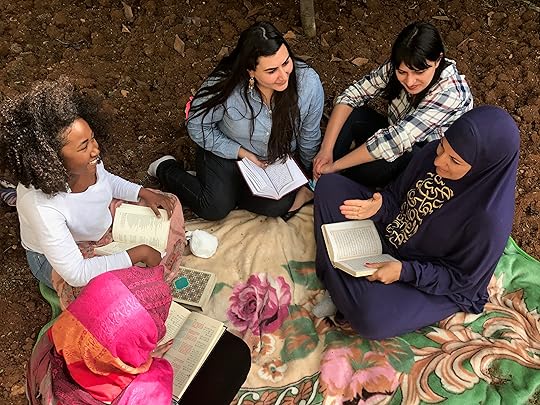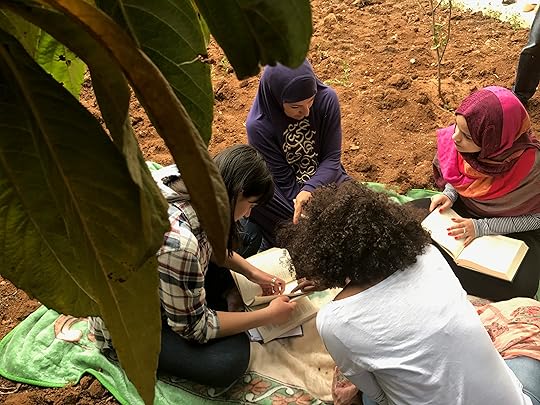Whose Qur’an?
The Qur’an has emerged as a rich resource for liberation. Over the past several decades, Muslims across the world have interpreted the Qur’an to address the pressing problem of oppression, discerning in the text a progressive message of social justice that can speak to contexts of marginalization, from poverty and patriarchy to racism, empire, and interreligious communal violence. These justice-based interpreters of the Qur’an have produced a complex and sophisticated body of work. I won’t even attempt here to summarize their extensive scholarship. But the core, the conceptual heart of their work, can be summed up in two main points.
The first point is this: religious understanding and practice is never neutral. Religions don’t fall out of the sky. Rather, religions are shaped by people, and people are social beings: they are the products of environments conditioned by factors like race, gender, sexuality, class, language, culture, time, and place. Consider the position of women in patriarchal Muslim societies. Gender egalitarian interpreters of the Qur’an, such as the African American Amina Wadud and the Pakistani American Asma Barlas, have stressed that the Qur’an has historically been (and continues to be) interpreted by men. As a result, male experiences and subjectivities have shaped how normative gender relations are understood in Islam. Because of the patriarchal contexts in which the Qur’an has been interpreted, “man” has become the norm of Islamic thought, and – they argue – we need to deconstruct that claim by showing how different Qur’anic verses and rulings relating to gender have been understood through the particular, socially privileged gaze of men, which is anything but neutral and universal.
 Photo by Shadaab Rahemtulla. Used with permission.
Photo by Shadaab Rahemtulla. Used with permission.And this brings us to the second point: whereas privileged groups have historically interpreted the Qur’an, it is imperative for marginalized communities to enter the interpretive circle, to partake in the task of producing normative Islamic thought and practice. In terms of gender, Wadud and Barlas have emphasized, time and again, that women need to participate fully in the process of interpretation, bringing their own lived experiences, subjectivities, and insights to understanding the Word of God. This, they argue, will produce a more inclusive and egalitarian expression of the Muslim faith. In other words, women can no longer be spoken about by men, whether those men are “conservative”, “liberal”, or otherwise. Instead, women must exercise agency by becoming the subjects of Qur’anic knowledge production.
Let’s shift to questions of class. Farid Esack, a South African anti-apartheid activist and liberation theologian, gives the example of Ramadan to tease out the classism of mainstream Muslim discourse. He takes issue with how numerous Muslims, particularly in the West, rationalize the purpose of fasting in the holy month: namely, to empathize with the poor. But this rationale, Esack points out, is anything but neutral. It’s based on an underlying assumption: that the Muslim who is fasting has a full stomach outside of Ramadan. That is, this discourse presumes an affluent, middle-class subject, one who does not experience the pangs of hunger and want throughout the rest of the year.
Interestingly, when you look up the fasting verse in the Qur’an, it simply states that the purpose of fasting is to attain “piety” (taqwa): “O you who believe! Fasting has been prescribed for you as it was prescribed for those before you, so that you may attain piety”. (Q. 2:183).
 Photo by Shadaab Rahemtulla. Used with permission.
Photo by Shadaab Rahemtulla. Used with permission.Esack’s point here is not, of course, that the Qur’an is against charitable works. On the contrary, spending in the way of the poor is a major theme in the sacred text. Rather, the point is that the fasting verse, significantly, does not presume an affluent subject and audience. It is the class privilege, the lived experience of a minority that has projected a charitable discourse of empathy onto this verse, and it is Esack’s own lived experience of growing up in a poor, marginalized community in apartheid South Africa that enabled him to discern and call out that interpretive classism.
To sum up, while the first task is one of critical deconstruction – how is this commentator’s contextual baggage (gender, culture, ethnicity, time, place) influencing his exclusionary understanding of the Qur’an? – the second task is one of critical (re)construction, building a more just and inclusive understanding of the sacred text, and thus of Islam as a whole, by bringing everyone’s experiences to the table.
This is the message of Islamic liberation theology.
Featured image credit: The Holy Qur’an, by Amr Fayez. CC-BY-2.5 via Wikimedia Commons.
The post Whose Qur’an? appeared first on OUPblog.

Oxford University Press's Blog
- Oxford University Press's profile
- 238 followers



